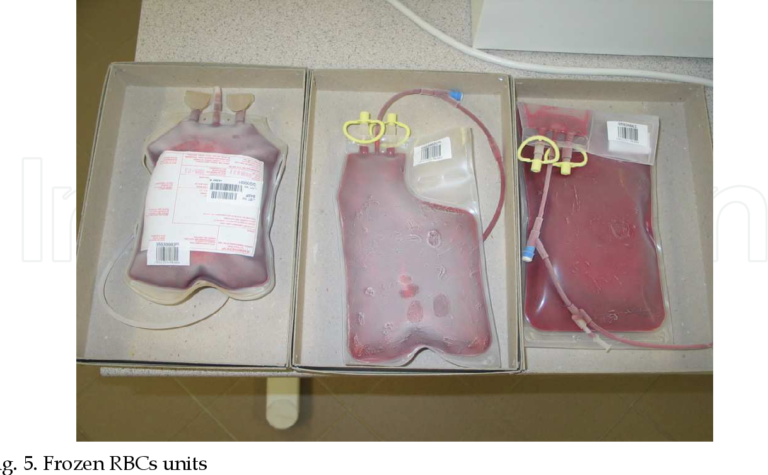In the intricate tapestry of blood banking, the role of cryopreservation emerges as a pivotal chapter, offering a groundbreaking solution for preserving specialized blood components and extending their shelf life. This article explores the nuances of cryopreservation’s contribution to blood banking, with a focus on the preservation of vital blood components. Additionally, we delve into how the deep freezer used in the laboratory helps cryopreservation elevates the landscape of blood storage and transportation, ensuring the longevity and efficacy of blood products throughout their journey within the healthcare system.
The Essence of Cryopreservation: A Technological Marvel in Blood Banking
Cryopreservation involves the preservation of biological materials, such as blood components, at extremely low temperatures. The process entails cooling the specimens to temperatures below freezing, often reaching ultra-low temperatures, to halt biochemical reactions and cellular activities. This meticulous procedure serves as a safeguard against cellular degradation, enabling the storage of blood components for extended periods without compromising their quality.
Specialized Blood Components: The Cryopreservation Imperative
Blood, as a life-sustaining fluid, comprises an array of specialized components, each playing a unique role in medical treatments and interventions. Cryopreservation becomes particularly imperative when safeguarding these specialized blood components, such as plasma, platelets, and certain white blood cells.
- Preserving Plasma for Clotting Factors:
Cryopreservation is instrumental in preserving plasma, which contains essential clotting factors. This is critical in various medical scenarios, including surgical procedures, trauma care, and treatments for individuals with coagulation disorders.
- Platelet Cryopreservation for Prolonged Viability:
Platelets, crucial for blood clotting and wound healing, have a limited shelf life when stored conventionally. Cryopreservation extends the viability of platelets, ensuring a more prolonged window for their usage in medical treatments.
- Cryopreserving Stem Cells in Blood: A Gateway to Regenerative Medicine:
Cryopreservation plays a pivotal role in storing blood-derived stem cells, opening avenues for regenerative medicine and personalized therapies. This has transformative implications in treating various diseases and conditions.
Extending Shelf Life: Cryopreservation as a Timeless Shield
The conventional storage of blood components is subject to the ticking clock of shelf life limitations. Cryopreservation, however, serves as a timeless shield, allowing blood banks to extend the shelf life of vital components beyond the constraints of traditional storage methods.
- Platelets: From Days to Years:
Platelets, with their short shelf life of a few days under regular storage conditions, can be cryopreserved, extending their usability for years. This is particularly beneficial in ensuring a stable supply for rare blood types and during periods of low platelet donations.
- Long-Term Preservation of Plasma:
Cryopreservation facilitates the long-term preservation of plasma, ensuring that this essential blood component remains viable for extended periods. This is crucial for maintaining a comprehensive inventory for various medical needs.
- Stem Cells: A Window into Future Therapies:
Cryopreserved stem cells offer a glimpse into the future of regenerative medicine. By extending the shelf life of these cells, blood banks contribute to the development of advanced therapies that harness the potential of stem cells for treating diverse medical conditions.
Cryopreservation and Blood Storage: A Symbiotic Relationship
Cryopreservation does not exist in isolation; it is intricately linked with the broader context of blood storage. The synergy between cryopreservation and traditional storage methods creates a comprehensive approach to managing the diverse array of blood components.
- Diversified Storage Options:
Blood banks utilize diversified storage options, combining cryopreservation for specialized components with conventional refrigeration for whole blood and other components. This strategic approach ensures that each blood product receives optimal storage conditions.
- Strategic Allocation of Resources:
Cryopreservation allows blood banks to strategically allocate resources based on demand. Instead of discarding expired components, cryopreservation enables the preservation of specialized units until they are needed, minimizing wastage and optimizing resource utilization.
- Flexibility in Blood Product Management:
The flexibility afforded by cryopreservation enhances blood product management. Blood banks can proactively plan for contingencies, ensuring that specialized components are readily available for patients with specific medical requirements.
Blood Transportation and Cryopreservation: A Journey of Vital Preservation
Blood transportation is a critical phase in the journey from donor to recipient, and cryopreservation adds a layer of resilience to this process. The ability to cryopreserve certain blood components ensures their viability and efficacy, even during extended transportation periods.
- Cryopreserved Platelets on the Move:
Platelets, cryopreserved for extended viability, can withstand the challenges of transportation without compromising their integrity. This is particularly beneficial in ensuring a stable supply of platelets to remote or underserved areas.
- Stem Cells: Safeguarded During Transit:
Cryopreserved stem cells, designed for prolonged storage, withstand the rigors of transportation. This is crucial in facilitating the movement of stem cell units between blood banks, research facilities, and medical centers, ensuring their availability for therapeutic applications.
- Preserving Plasma Integrity:
Cryopreservation of plasma ensures that this vital blood component maintains its integrity during transportation. Plasma, rich in clotting factors and antibodies, remains potent and ready for use upon reaching its destination.
Challenges and Considerations in Cryopreservation for Blood Banks
While cryopreservation offers myriad advantages, it comes with its own set of challenges and considerations. These include the potential for cell damage during the freezing and thawing process, the need for specialized equipment, and meticulous temperature control. Blood banks must invest in state-of-the-art cryopreservation technologies and adhere to standardized protocols to mitigate these challenges effectively.
Future Horizons: Advancements in Cryopreservation Technologies
The future of cryopreservation in blood banking holds promise with ongoing advancements in technology. Researchers are exploring novel cryoprotectants, improved freezing and thawing techniques, and innovative storage solutions to enhance the efficiency and effectiveness of cryopreservation in blood banks.
Conclusion: Cryopreservation – A Timeless Shield for Blood Banking
In the dynamic landscape of blood banking, cryopreservation stands as a timeless shield, preserving the vitality and extending the shelf life of specialized blood components. By seamlessly integrating cryopreservation into blood storage and transportation practices, blood banks ensure a resilient supply of blood products that can meet the diverse and evolving needs of the healthcare system. As technology advances and research progresses, cryopreservation continues to play a pivotal role in unlocking new frontiers in regenerative medicine, personalized therapies, and the overall enhancement of patient care.


